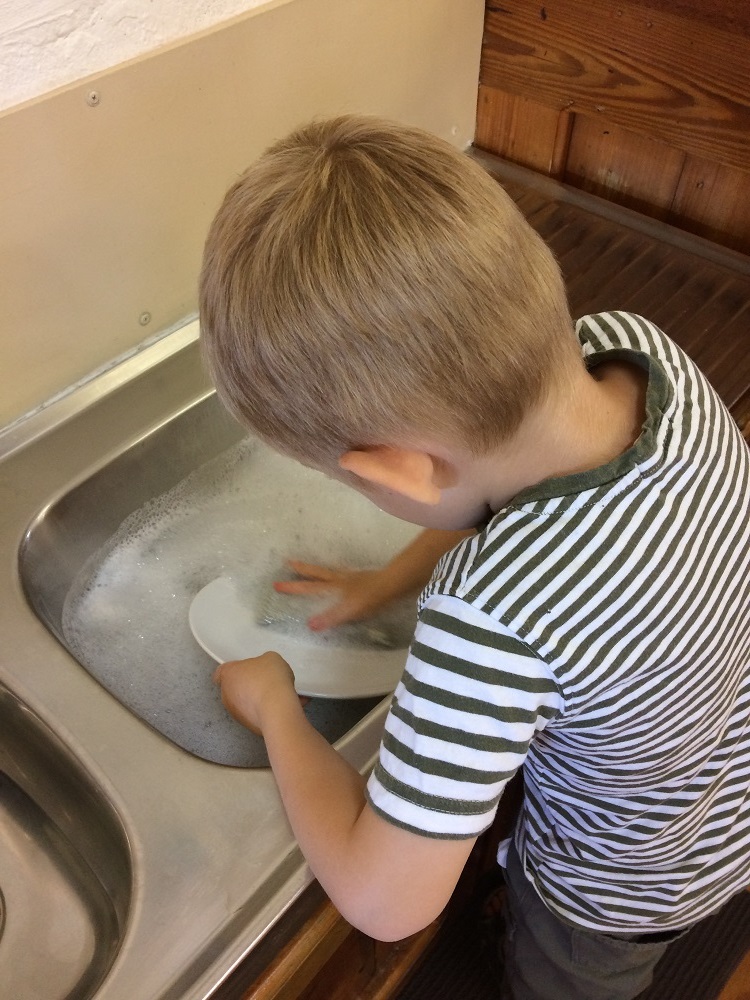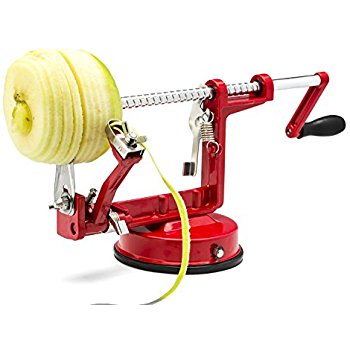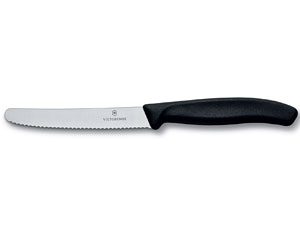Special thanks to Emma from Montessori Play School Victor Harbour for allowing me to use the beautiful images of children’s involvement in meal times in this post.
For the second post in our Montessori at home series, I had a request to look at mealtimes in the home, and how to involve your child in preparing for them.
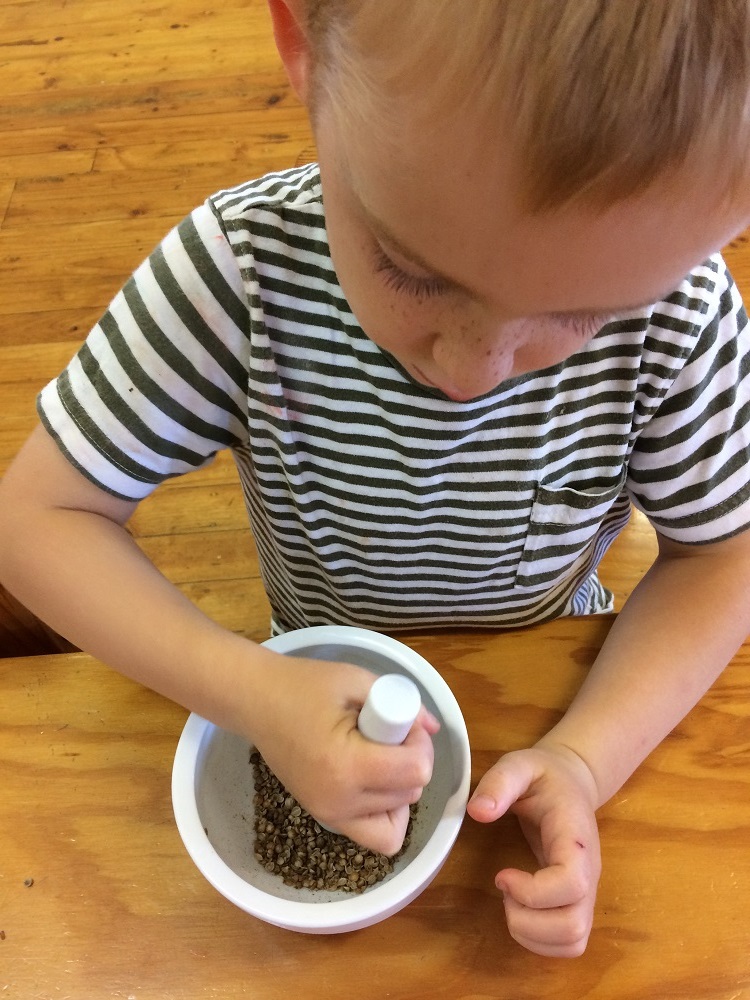
The process is often just as important in a practical life experience as the end result. If children are involved in preparing for a meal, they are more likely to eat it, and giving them responsibility and encouraging their independence will make life a lot easier for everyone! Check out my previous post about independence if you want some more ideas about how to improve your child’s independence and links to resources or ideas sources on the topic.
Below are some suggestions for how to involve your child.
Choosing food
While it’s not always possible, providing your child with a choice (within limits) can give them a feeling of control and help them want to eat it. I would recommend giving 2 to 3 options, leaning towards 2 options for the younger children. You can make this easier for yourself by only offering things you want them to have or know they like. For example, “would you like spaghetti bolognese or beef tacos for dinner?”

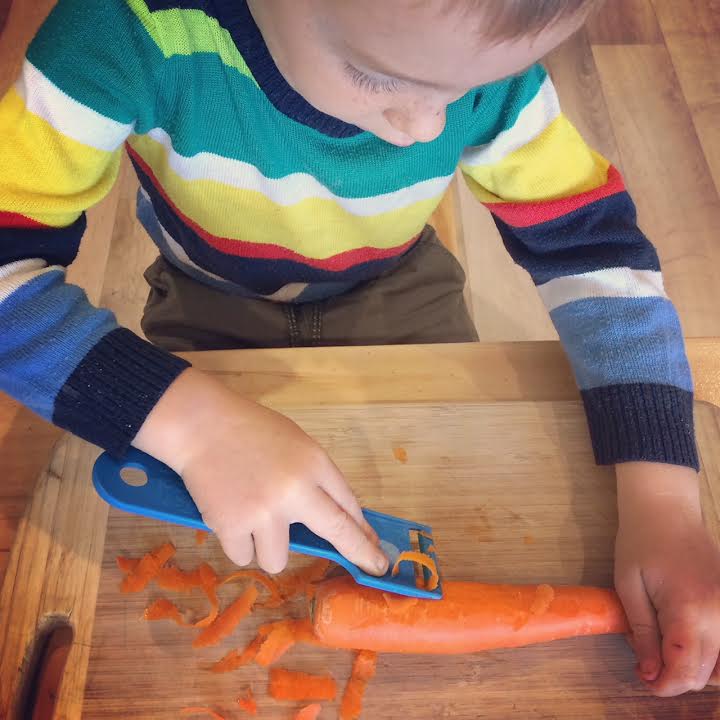
Preparing the food
Involving children in the preparation of food can be very simple. It will probably take longer though, so allow more time than you think you’ll need!
Some people do not feel comfortable with young children using sharper knives, but there are options available to you. Kiddikutter knives (retailing at AU$12.95 each and pictured below) are useful as a starting point, but you will find it hard to cut anything with much firmness with these. Another option is using a spiral peeler with things like apples, pears, and potatoes (pictured). These you can usually find at cooking shops in person or online.
If you want to teach your child to use a proper knife, you can find some serrated knives that they are able to use (example below). If used properly, they are safe. I have taught 3 and 4 year olds how to use these knives and over 2 years we only had 3 minor cuts (and those children hadn’t waited for a lesson on how to use it). But, ultimately it is up to you what you want to provide them with.
Cooking
The age of your child and their maturity may affect what cooking you are willing for your child to do. Ensure that appropriate supervision is available, and always ensure you demonstrate how to use everything properly. When demonstrating, I recommend limiting the amount of words you use, as this becomes more of a distraction. It is important that children learn the appropriate way to use all aspects of the kitchen for their own safety (whether they are helping you cook or not) and also to assist them in later life when they have to cook for themselves.
Cooking together is a wonderful way of passing on family knowledge and recipes, and gives you further chances to bond. And you never know – soon you may be having lovely dinners cooked for you!
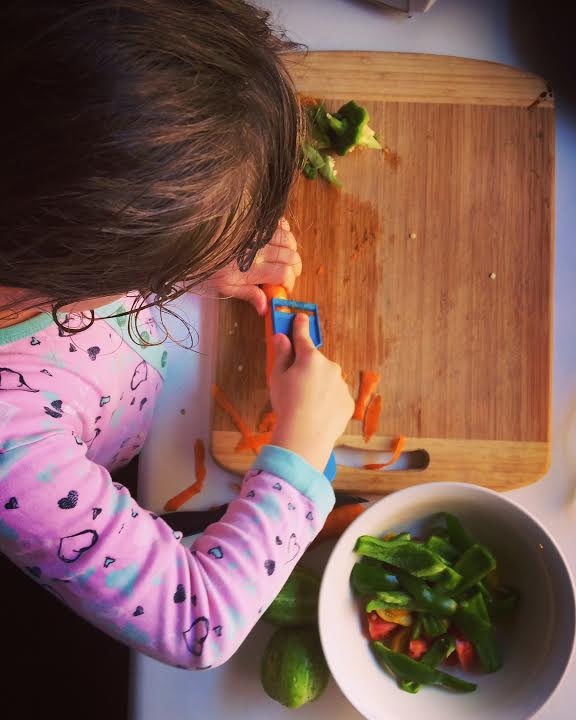
Setting the table
Setting up the table for a meal is an easy job for children to accomplish. If you model how to do the job and have all the things easily accessible, children will quickly take over how to do this themselves. Some people like to use template mats to show younger children where to place things. For example, with an outline of a fork, spoon, knife, and bowl/ plate (example pictured).
We work as a team in the classroom to set the tables. With regular routine the children know what to get out and how to set it up. Or, it could be the job of one person and you can use a roster. Whatever works for you!
Make the process enjoyable, however works for you. Start your conversations about the day then, use a ‘setting up song,’ and make the table setting visually appealing. Use table cloths or placemats, and maybe place some flowers or plants in the middle. It is also important that the children use ‘normal’ crockery and cutlery rather than plastic as soon as they are able to. For one thing, this shows that they are of equal importance to the adults and that you (as the adult) trust them to be responsible. For another, they will need to learn how to use these things sooner or later, so would it not be better to get as much practice as possible? Children are often more capable than we give them credit for. It might be messy to start with, but a mess can be easily cleaned and the lessons learnt and the trust treasured will stay with the child forever.
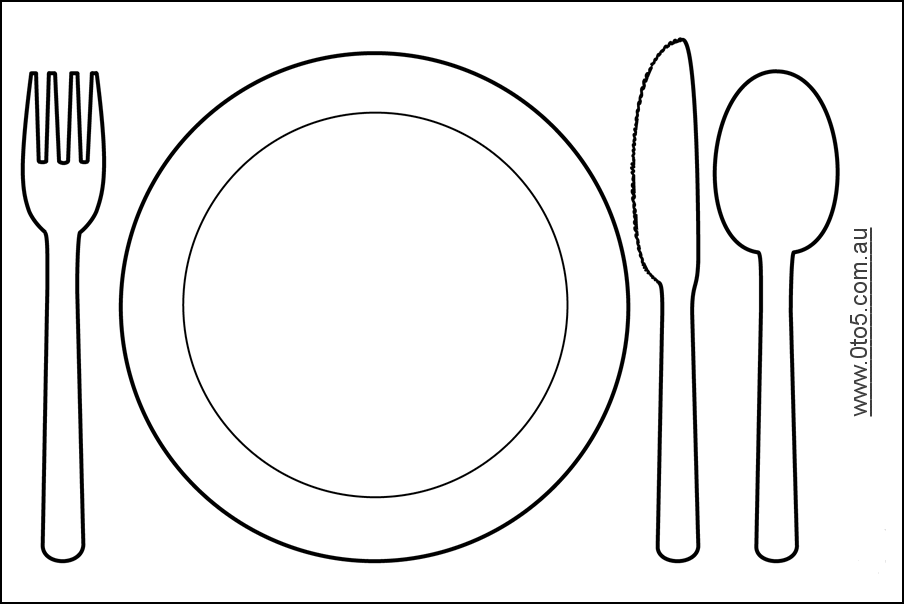
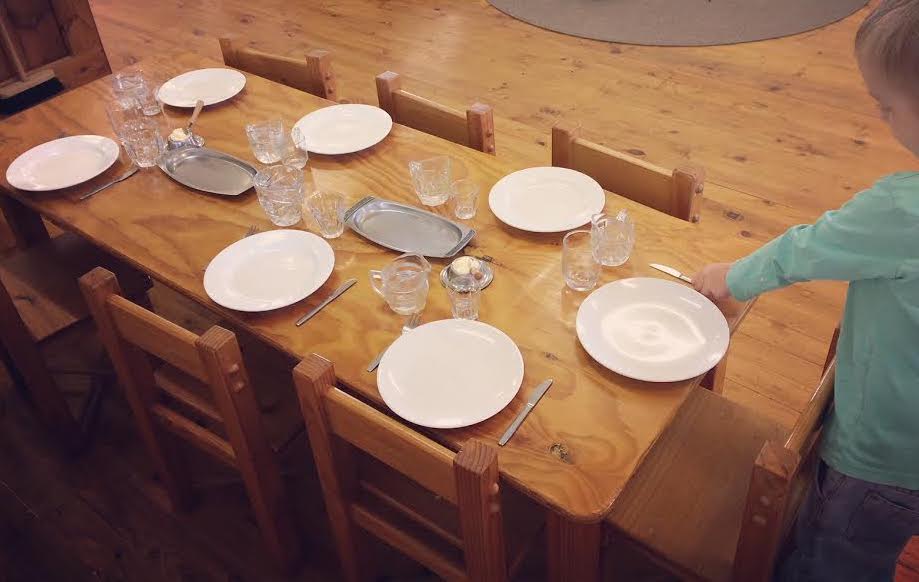
Eating together
Making meal times a family affair is important for a child’s sense of worth. It is a wonderful time to connect as a family/ community and talk about each other’s days. Having the adults and children eating together also means that children feel they are a valued members of the family and not considered less important than the adults.
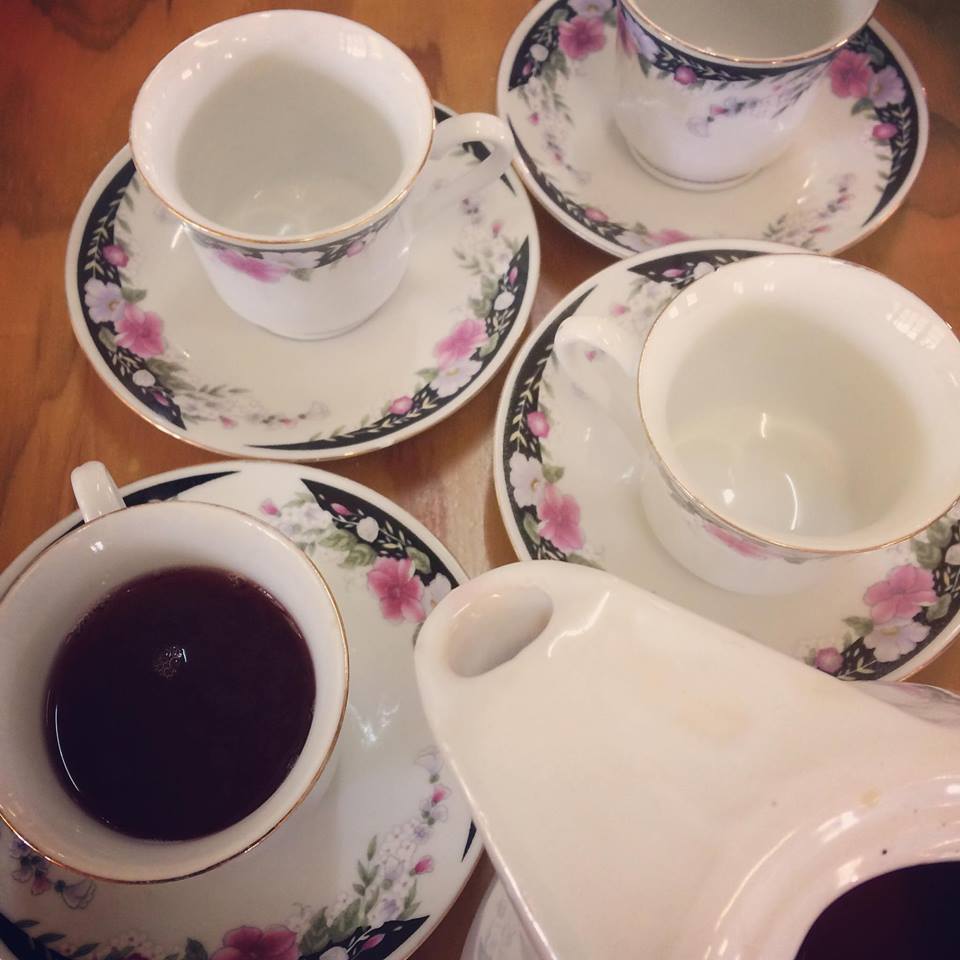
Eating meals together becomes a special ritual, and this can also be transferred to other smaller meals (not just breakfast, lunch, and dinner). For example, children seem to really enjoy the process of making tea. Obviously you would use a caffeine-free variety like fruit or herbal teas, or Rooibos so you don’t have them running up the walls! Sitting down together to enjoy a pot of tea is a pretty precious thing, or even having one all to oneself.
Packing up and cleaning
Montessori believed it is important for the whole cycle of learning to be achieved – that is, start, middle, and end, ready for the activity or material to be used by the next person. The same can be said of everyday occurrences. Involving the children in packing up after a meal and encouraging them to assist with cleaning will enable them to see the whole process involved in the situation.
For instance, if the dishes are not washed, they will not be ready for the next meal they are needed for. What’s more, young children actually enjoy cleaning! So make use of it while it lasts! Clearing the table or doing the dishes are simple ways that the children can help. Include them in a washing/ packing up roster or have everyone involved as a family to get the job done.
Involving children with packing up and cleaning also shows the importance of community participation. Everyone benefits when we help and look after each other, and these lessons will then be applied to wider society.
